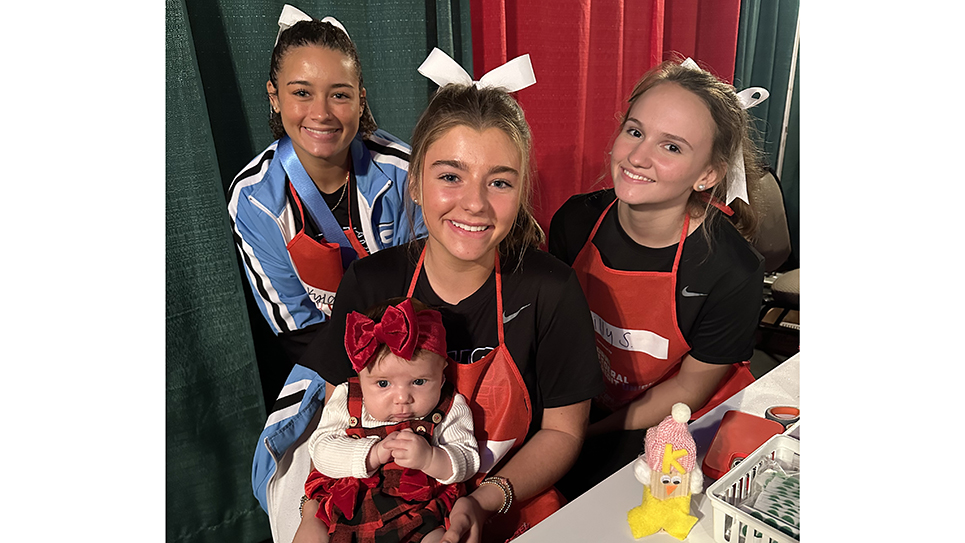‘Why, Tell Me, Why?’
By Tom Mattingly
Someone asked why Tennessee fans had always made such a big deal about the football team wearing white jerseys for road games. It was definitely a big deal in those uncertain times in 1971 when the whole white jersey issue within the SEC raised its ugly head.
The Vols had worn orange jerseys on the road since the days of Gen. Bob Neyland, with three notable exceptions, all losses, all with the Vols wearing white jerseys. Those came in the 1953 Cotton Bowl against Texas, the 1963 Alabama game at Legion Field, and the 1969 Cotton Bowl, also against Texas.
Many Tennessee opponents had worn their home jerseys when they played in Knoxville, with Alabama in crimson, Kentucky, Florida, and Ole Miss in blue, UCLA in powder blue, and so forth.
There are some vintage pictures of Tennessee in orange and Alabama in crimson in long-ago copies of Sports Illustrated, the classic ones being a cover shot of Mike Jones and Dennis Homan going for the ball in the 1967 game, and a two-page shot of Hal Wantland diving over the Tide line in the 1965 game, both in Birmingham.
Orange jerseys on the road ended with an SEC “Gentlemen’s Agreement” in 1971, giving the home team the choice of taking the school-colored shirts and the visiting team wearing the white shirts, except at LSU and, for a year or so, at Vanderbilt.
To his credit, Tennessee head coach Bill Battle had voted against the 1971 agreement (“You’re darn right I did,” he said when quizzed about it years later), thus defending the honor of the orange jersey.
One genesis of the white jersey rule may have come from the 1969 Tennessee-Vanderbilt game at Neyland Stadium. It was a sunny November day, Vanderbilt wearing gold, Tennessee wearing orange. Only the helmets distinguished one team from the other.
Media reports after the game indicated that Tennessee would likely wear white in Nashville the next season. As things turned out, the Vols didn’t. It was a cloudy day and the differences between the two sets of jerseys were more pronounced.
In 1982, the NCAA had changed the “jersey rule,” requiring teams to wear the school color jerseys for home games. LSU wore purple jerseys for all home games from 1983 to 1994, including games against Tennessee in 1989 and 1992. That looked strange for Vol fans who had grown up with LSU in white, Tennessee in orange, regardless of the venue.
When Gerry DiNardo became LSU’s head coach in 1995, he personally met with each member of the NCAA Football Rules Committee about changing the rule. DiNardo’s efforts were successful, and the Tigers were allowed to wear white jerseys again beginning in 1995.
One impact of the new rule was that the visiting team would have to give the home team permission to wear the white jerseys. The first team to deny LSU’s request was DiNardo’s former team, Vanderbilt, in 1996. Instead of going back to purple jerseys, the Tigers took to the field in new gold jerseys and won 35-0.
The SEC later adopted a league rule stipulating that the home team had sole discretion in determining its jersey color. The opponent took whatever was left. Today, there are times both SEC teams wear their school color jerseys in the same game.
Perhaps the most radical change in uniforms came in 1963, with a get-up called the “Halloween Uniforms,” so named because the jerseys were light orange with black and white stripes on the shoulders.
“We had new orange jerseys that season, and new white ones had just come in,” 1963 tailback Mallon Faircloth remembered, recalling the week before that season’s contest against Alabama. “They were the jerseys with stripes across the shoulder. I guess Coach McDonald wanted to change our luck. He didn’t discuss it with any of us. I think he told us that week we were wearing them.”
Tennessee has won a number of big games in the white shirts over the years, the same way they have in orange. There was the first “Blue Grass Miracle” in 1971, when Carl Johnson saved the day with an 87-yard run with a fumbled pitchout, just when it appeared Kentucky was going in for the tying or go-ahead score.
The Vols broke a losing streak against Alabama in 1995. Antonio Wardlow made the cover of Sports Illustrated with his blocked punt and recovery for a touchdown at Georgia in 2006, wearing a white No. 38. There were wins at Notre Dame in 1991 and 2001, and a 10-6 win at Miami in 2003.
One Tennessee historian has written that many Vol fans considered the white jerseys a jinx, likely for good reason. Despite some initial trepidation, they have accepted the white shirts with open arms.






